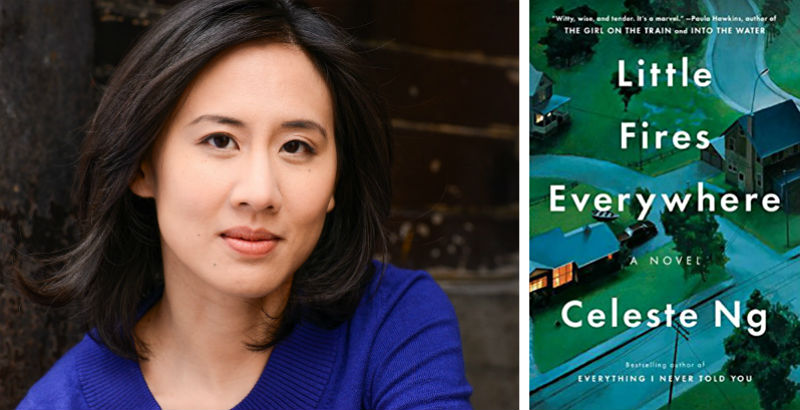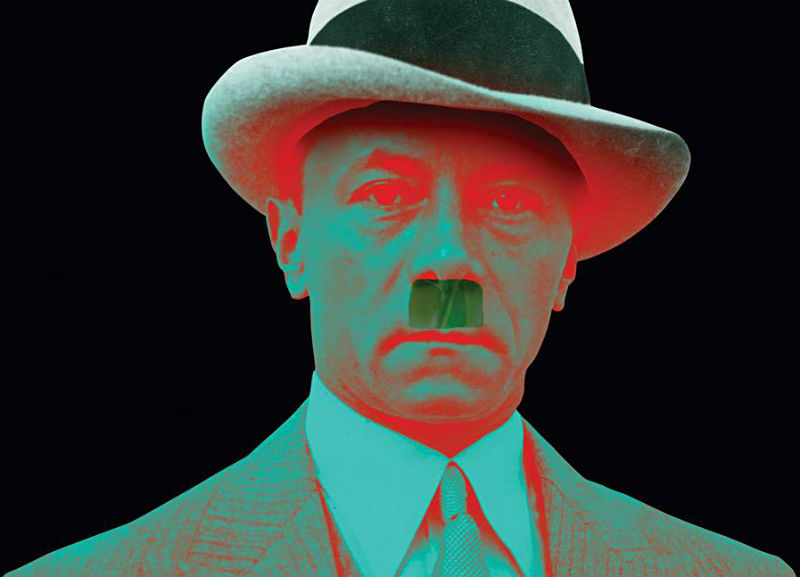Flexible & Free: Dave Rempis' Ballister at Kerrytown Concert House

Saxophonist Dave Rempis has fond memories of playing Ann Arbor over the years. The Chicago-based improviser and long-time member of renowned free jazz group The Vandermark 5 fondly recalls late-'90s gigs with locally grown and trained players, such as Colin Stetson, Stuart Bogie, and Matt Bauder.
But none were likely more memorable than a workshop for students at the University of Michigan School of Music, where Rempis had applied and been rejected a few years earlier.
PencilPoint TheatreWorks' Ypsi THRIVE highlights new one-act plays

Brian Cox returned to creating theater about five years ago when he began writing his first full-length play, Clutter, based on one of his short stories. Since then, he has written multiple one-act plays, directed, produced, and devised many more shows and storytelling nights, and started his own theater company, PencilPoint Theatreworks in Ypsilanti. He’s an accomplished director, producer, and artistic director, and earlier this year Cox won Encore Theatre's Wilde Award for Best New Script with Clutter.
After offhandedly mentioning this during the interview, Cox pauses, glancing down and blushing slightly. “But I don’t act. No acting.”
So what is Cox’s newest project? On Sept. 28 he’s opening Ypsi THRIVE, a three-day, new-play festival at Riverside Arts Center that features seven short plays.
Akropolis Reed Quintet debuts its latest web series with a world premiere
The local ensemble Akropolis Reed Quintet made waves nationally in 2014 when the group won the prestigious Fischoff Gold Medal, the first group of its kind to win the award. Tim Gocklin (oboe), Kari Landry (clarinet), Matt Landry (saxophone), Andrew Koeppe (bass clarinet), and Ryan Reynolds (bassoon) founded Akropolis at the University of Michigan in 2009. The reed quintet has been extremely prolific from the start, including releasing albums, streaming concerts online, and conducting educational programs locally, nationally, and internationally (when I reached out to the group, they were in Abu Dhabi).
On Wednesday, Sept. 27, Akropolis will relaunch its web series on akropolisquintet.com and youtube.com/akropolis5tet: "In 2011, we created our YouTube Web Premiere Series as a platform to showcase new works for reed quintet online, around the world," the group wrote on the Facebook event page for its latest, which will feature a live studio recording of Gregory Wanamaker's new arrangement of "Elegy" from his Duo Sonata written specifically for Akropolis. "This series has over 31,000 views, 522 subscribers, and features 13 online premieres, 9 of which are from American composers!"
I caught up with ensemble member saxophonist Matt Landry to chat about the group’s latest album, The Space Between Us (“pure gold” according to the San Francisco Chronicle), classical music and popular culture, and what’s next for the group.
Discrete Ambiance: “Swarm Study/II” at UMMA

It’s not unfair to say Swarm Study/II is a visual art experience that will long stay with you. But such an accolade is also far too passive. If given the chance, Swarm Study/II will not only stay with you -- it will literally follow you.
This 2011 site-specific installation on display in the University of Michigan Museum of Art’s Irving Stenn Jr. Family Project Gallery, mounted through the courtesy of the Maxine and Stewart Frankel Foundation for Art, is held in conjunction with the museum’s Victors for Art: Michigan’s Alumni Collectors -- Part II: Abstraction exhibition.
Character Study: Celeste Ng at Literati

In Shaker Heights, Ohio, if your lawn reaches a certain height, the city will mow it -- then send you a bill. Your house cannot be the same as any others on your street, but the paint color has to be approved so that it doesn’t clash. Your trash is not placed on the curb for pickup; instead, a small vehicle similar to a golf cart will speed down your driveway, collect your cans, and bring them to the garbage truck on the street. These are some of the quirks Celeste Ng shared at Literati on Friday about her hometown, which is the setting for her second novel, Little Fires Everywhere.
Theatrical Projections: Major plays and operas are just a movie ticket away

If you don’t live in New York City or London, and perhaps don’t have the money to go to The Metropolitan Opera or the National Theatre on a regular basis, you might feel like you’re missing out on some amazing arts events.
But HD broadcasts of productions from these venues to movie theatres around the world are a way for people all around the world to see legendary works like La Bohéme, Hamlet, Everyman,Der Rosenkavalier, and more, performed by legendary performers such as Helen Mirren, Benedict Cumberbatch, Ralph Fiennes, Plácido Domingo, Vittorio Grigolo, and Renée Fleming. NT Live has been broadcasting shows from the National and other theaters in London to movie theaters since 2009, and The Met: Live in HD has been broadcasting operas since 2006.
Sibling Sounds: Wild Belle at the Blind Pig
Last night was not Wild Belle’s first time playing at the Blind Pig. In fact, the group played one of its first ever shows there years ago, opening for the Afro-beat dance band Nomo in what was something like a family reunion. Elliott Bergman (saxophones, keyboards) is in both bands -- he founded Nomo while at the University of Michigan -- as are Erik Hall (guitar) and Quin Kirchner (drums), and Bergman's younger sister, Natalie (vocals, guitar), started guesting with Nomo when she was just 16. (Bassist Kellen Harrison is the only non-Nomo-affiliated member of Wild Belle.)
With a reserved “Hello, Ann Arbor” from Natalie, the band took the stage and launched into the first three tracks from 2016's Dreamland: “Mississippi River,” “Losing You,” and the title track. Natalie often seemed lost in her own world as she sang, but she was also a gripping stage presence, dressed in a loose white blouse and velvet pants emblazoned with white snakeskin stars.
The photography exhibit "In Transit" travels all around Ann Arbor

With over 70 photographs on view in locations throughout Ann Arbor, In Transit is a lively, four-headed monster of an exhibition. From the back hall of the City Council Chambers to The Session Room on Jackson Avenue, to the buses (inside and outside) of TheRide, this collection of photos by current and former photography students at Washtenaw County Community College will be all over town for the next three months.
But the best place to see all these photographs celebrating the local places and people of southeastern Michigan is right now through September 30 in Gallery 117 of the Ann Arbor Art Center.
U-M’s "Resistible Rise of Arturo Ui" draws parallels with current events

He drew support from working class people by appealing to their fears and their prejudices in a time of economic strife. He went into angry rants blaming minorities for all the country’s problems. He encouraged his supporters at rallies to punch out those who protested against him. He came to power in an unusual though legal way, while claiming the support of the nation. He pushed a philosophy of racial and ethnic superiority. He told the crowds that “I and I alone can make this nation great again.”
He was Adolph Hitler.
"The Zodiac Killer" comes alive in 4K at the Michigan Theater

Many filmmakers have tackled the true crime saga of the Zodiac Killer, who stalked Northern California and stole national headlines in the late '60s, but only one has been brave enough to try to face the murderer himself. That distinction belongs to Tom Hanson, an L.A. fast-food-magnate-turned-amateur-director who made his 1971 debut, The Zodiac Killer, with the express purpose of catching the actual Zodiac.


































